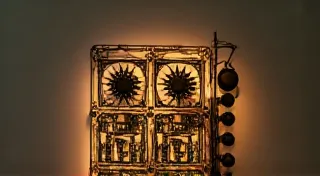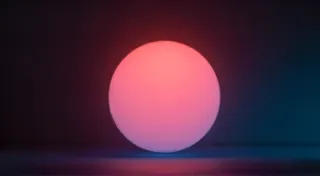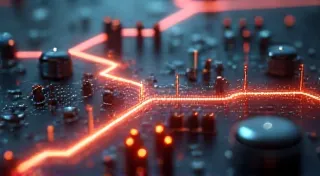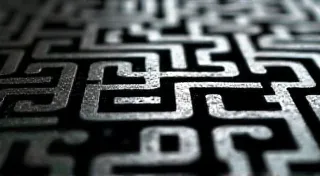DIY Electronics Projects: Unleash Your Inner Maker
Welcome to a world where imagination meets innovation! This website is dedicated to the exciting realm of DIY electronics projects, offering step-by-step tutorials, inspiring ideas, and in-depth explorations for makers of all skill levels. Whether you're a seasoned engineer or a curious beginner just starting your journey, you're in the right place to learn and build amazing things. We cover everything from the basics of circuitry to advanced techniques using platforms like Arduino and Raspberry Pi. Prepare to transform your ideas into tangible realities!
The allure of building your own electronics lies in the power of creation. It’s about understanding how things work, pushing boundaries, and finding unique solutions to real-world problems. It's about more than just following instructions; it's about learning the underlying principles that allow you to customize, adapt, and invent. This site provides the roadmap to that journey.
Getting Started: Foundations and Essential Tools
Before diving into complex projects, it's crucial to grasp the fundamentals. Understanding basic circuitry is the bedrock upon which all electronic creations are built. We're not just talking about resistors and capacitors; we're delving into logic gates, signal processing, and the flow of electrons. As you progress, you're likely to find that projects often require a degree of customization and ingenuity. For example, you might need to repurpose old electronics into artistic creations. Check out The Alchemist's Crucible for some creative inspiration on transforming discarded components into works of art. Equally important is mastering the tools of the trade. Learning to fabricate custom PCBs, the backbone of many projects, is a valuable skill.
Once you've built a solid foundation, you can start exploring the power of microcontrollers. Arduino has democratized electronics, making it accessible to hobbyists and professionals alike. Its ease of use and extensive community support make it the perfect platform for beginners. Raspberry Pi, on the other hand, offers a more versatile computing environment, ideal for projects requiring more processing power and networking capabilities. Consider exploring Raspberry Pi: Seeds of Automation to see how this powerful little device can transform your home into a smart ecosystem.
Exploring Project Categories: From Simple Circuits to Complex Systems
We're organized into various project categories to help you find exactly what you've been looking for. Let’s take a tour:
Art & Aesthetics: Electronics as Medium
Electronics aren’t just about functionality; they can also be a powerful medium for artistic expression. Our "Art & Aesthetics" section explores the intersection of technology and creativity. Consider projects like Chromatic Reverberations, which lets you build data-driven color-changing displays, or Circuitry as Poetry, where you can translate emotion into electronic response. For those drawn to upcycling, The Alchemist’s Crucible guides you through repurposing old electronics into artistic creations—a brilliant way to combine sustainability and creativity.
Precision & Timing: The Art of Control
Many electronics projects require precise timing and control. This section covers topics like timekeeping systems, sensor fusion, and finite state machines. Building a precise timekeeping system with Arduino, for example, is more than just setting a clock; it's about understanding the principles of oscillators, counters, and timing circuits. Take a deep dive into Chronometric Cascades to see how it's done. Sensor fusion is another fascinating area, where data from multiple sensors are combined to create a more complete picture of the environment. Learn how to navigate this complex world in The Cartographer’s Compass.
Data & Sensory Interaction: Beyond the Visual
The power of electronics truly shines when it's used to interact with the world in new and innovative ways. This section explores projects that utilize sensors, actuators, and data visualization techniques. For those interested in expanding their senses, Synesthetic Circuits teaches you how to map data to sensory output beyond visual displays. We also cover how to use microcontrollers to preserve and recreate historical sounds, allowing you to experience the echoes of the past through technology – find out how in Ephemeral Echoes. If you're looking to delve deeper into old tech, Echoes in the Code explores how to use Raspberry Pi for legacy hardware emulation.
Power & Efficiency: Sustainable Electronics
As technology becomes increasingly integrated into our lives, energy efficiency and sustainability become paramount. This section focuses on projects that harvest energy from the environment and optimize power consumption. The ability to harvest energy from ambient vibrations, known as "Resonance and Ruin," is a fascinating area of research. Check out Resonance and Ruin to learn more. We also guide you in building automated power monitoring systems, allowing you to track and optimize your energy usage – see Guardians of the Grid.
Hardware Mastery: Customization and Fabrication
Sometimes, off-the-shelf components just won't cut it. This section focuses on the skills and techniques needed to create your own custom hardware, from designing PCBs to 3D printing enclosures. Learning to fabricate custom PCBs is a key skill for any serious electronics enthusiast. Find out more in The Alchemist’s Toolkit. And when it comes to protecting your creations, 3D printing custom enclosures is a great way to add a professional touch.
Troubleshooting & Advanced Topics
Even the most experienced electronics builders encounter problems. This section provides guidance on debugging and troubleshooting common issues. Debugging an Arduino project can sometimes feel like searching for a ghost in the machine—but with the right tools and techniques, you can track down the source of the problem. Check out The Ghost in the Machine. Interference and noise can also be major headaches in radio frequency projects – we guide you through solving these challenges in Fractured Harmonies.
Beyond the Basics: Exploring the Cutting Edge
We believe that electronics is a constantly evolving field, and we’re committed to exploring the latest advancements. We’re covering areas such as low-power wireless networks, allowing for connected devices. Discover the possibilities that lie in Shadows of the Digital Frontier.
For those drawn to the intersection of electronics and history, we also explore how to use technology to preserve and recreate historical sounds. Learn how microcontrollers can be used to recreate historical sounds in Ephemeral Echoes. And for anyone who's ever pondered the invisible forces that surround us, we delve into the fascinating world of electromagnetic field detection and analysis. Discover how to detect and analyze electromagnetic fields with Whispers of the Void.
Finally, when designing complex systems, it’s crucial to employ robust design principles. Learning to design robust systems with finite state machines allows you to create predictable and reliable behavior – see more in The Labyrinth of Logic.
Join the Community!
We’ve only scratched the surface of what's possible with DIY electronics. This website is more than just a collection of tutorials; it's a community of makers, innovators, and problem-solvers. We encourage you to explore, experiment, and share your creations with the world. Happy building!
Stay tuned for new projects and tutorials, covering topics ranging from advanced Arduino applications to innovative Raspberry Pi hacks. We're constantly updating our resources to keep you on the cutting edge of the electronics revolution. Let’s build the future together!



















